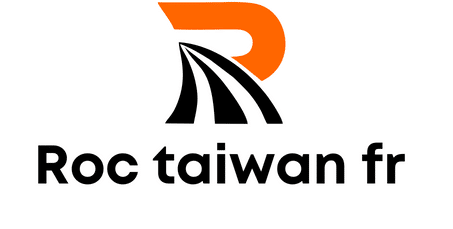How do Virtual Team Challenges Sustain Motivation in Remote Athletes?

As we navigate the continually evolving landscape of work and play, we find that more teams – be they in office settings or in the realm of athletics – are choosing to operate remotely. Virtual teams have become the norm rather than the exception, and with this shift, new hurdles and benefits have emerged. One particularly intriguing question arises – how do virtual team challenges sustain motivation in remote athletes?
The Emergence of Virtual Teams
The rise of virtual teams is a phenomenon that has been influenced by advancements in technology and a growing acceptance of remote work scenarios. Teams, once bound by geographical proximity, can now span across continents, fostering a unique kind of collaboration that is both challenging and rewarding.
A lire aussi : How Do Elite Sprinters Structure Microcycle Training for Peak Performance at Major Events?
In the realm of athletics, virtual teams take on an additional layer of complexity. The physicality of sports inherently demands a level of in-person interaction, yet innovative solutions and tools are turning this notion on its head. Athletes train in their respective locations, often alone, while still being part of a broader team working towards common goals. This shift has pushed both athletes and coaches to find new ways to maintain and enhance motivation, performance, and team spirit.
Building Trust in a Remote Setting
Trust is a foundational element of any team, and it is especially vital within virtual teams. Trust in this context refers to the belief that team members will do their part, support one another, and act in the team’s best interests. In this sense, building trust within virtual teams requires intentional effort.
Sujet a lire : What’s the Role of Sport Psychology in Managing Career Transitions for Retired Athletes?
One way to foster trust in virtual teams is through open and consistent communication. Coaches and athletes can utilize online communication tools to maintain a regular dialogue, discussing training schedules, performance metrics, and even personal life updates to foster a sense of camaraderie and shared commitment.
Furthermore, the use of tools such as video conferencing can help bridge the gap of physical distance, allowing team members to interact face-to-face, albeit virtually. This can enhance the sense of connection between athletes, strengthening the team’s bond and mutual trust.
Staying Motivated: The Role of Virtual Team Challenges
In traditional athletic teams, motivation often comes from competing together, achieving shared victories, and experiencing the highs and lows of the sport. However, when athletes are physically isolated, sustaining motivation can be more challenging. This is where the concept of virtual team challenges comes into play.
Virtual team challenges offer a unique way to engage remote athletes, fostering a sense of team spirit and unity even when they’re geographically apart. These challenges can range from shared fitness goals to friendly competitions, all designed to promote collaboration, competition, and a sense of shared accomplishment.
In addition to fostering team collaboration, virtual team challenges can also help athletes enhance their individual skills. By setting specific, measurable, and time-bound goals within these challenges, athletes can focus on improving their performance in particular aspects of their sport. This personalized goal setting can be an additional source of motivation, driving athletes to push their boundaries and exceed their personal bests.
Utilizing Scholar and Crossref Tools for Performance Tracking
To facilitate effective virtual team challenges, it’s crucial to have reliable tools for monitoring and tracking athlete performance. Scholar and Crossref tools are examples of platforms that can provide useful insights into the training progress and performance outcomes of remote athletes.
Scholar is an online research tool often used in academic contexts. However, its use can be extended to sports analytics, providing in-depth insights into athlete performance and training strategies. This data can be used to design more effective virtual team challenges and training programs, enhancing the overall performance of the team.
Crossref, on the other hand, is a digital hub that facilitates information sharing among team members. It allows athletes and coaches to share training logs, performance data, and other relevant information easily and efficiently. This level of transparency can further foster trust among team members, helping to maintain motivation and a sense of shared purpose.
Cultivating a High-Performance Virtual Team Culture
Creating a team culture that supports high performance, resilience, and motivation is a crucial aspect of managing virtual teams. This encompasses the attitudes, beliefs, behaviors, and norms that define how the team operates and collaborates.
To cultivate a high-performance culture in a virtual athletic team, it’s necessary to establish clear expectations, norms, and goals. Open communication about these factors will ensure that all team members are on the same page and working towards the same objectives.
Moreover, creating opportunities for social interaction can help foster a sense of belonging and team identity. Virtual team-building activities, social media groups, or informal video chats can provide these socializing opportunities. Remember, a team that feels connected and enjoys working together will likely be more motivated and perform better, regardless of the physical distance between members.
Implementing Effective Virtual Team-Building Activities
Implementing virtual team-building activities is an effective way to boost morale, enhance team cohesion, and maintain motivation among remote athletes. Remember, a team that feels connected and enjoys working together is likely to be more motivated and perform better, regardless of the geographical distance between team members.
The key to successful virtual team-building lies in creativity and adaptability. Given the unique challenges of remote work, traditional team-building exercises might not be as effective. Instead, coaches and team leaders need to think outside the box to devise activities that are engaging, fun, and meaningful for remote athletes.
There’s a wide range of virtual team-building activities that can be employed. For instance, fitness challenges can be organized where each team member is asked to record and share their workouts. This not only fosters a sense of competition and camaraderie but also ensures that each team member is staying active and healthy.
Virtual social events like team dinners or movie nights can also be a great way to foster a sense of community. These events provide a relaxed atmosphere where team members can get to know each other better, strengthening the bonds between them.
Furthermore, coaches can use platforms like Google Scholar to share insightful articles and research on athletic performance and strategies. This can spark discussions among team members, allowing them to learn from each other and collectively come up with innovative strategies for improvement.
Lastly, acknowledgement and celebration of each team member’s contributions can be an excellent motivator. Whether it’s a personal best in training, a longer contribution in a team meeting, or simply consistently showing up and giving their best, recognizing and celebrating these achievements can foster a sense of appreciation and motivation among team members.
Conclusion: Overcoming the Challenges of Virtual Teams
The advent of virtual teams has forever changed the landscape of team sports. While it brings about its unique set of challenges, it also presents opportunities for growth, innovation, and resilience. The physical distance between team members need not be a hindrance to motivation and performance. Instead, with thoughtful strategies and tools, it can be turned into an opportunity to cultivate a high-performing, tight-knit team that is united by a shared goal and purpose.
Building trust, implementing effective virtual team challenges, using tools like Google Scholar and Crossref for performance tracking, and fostering a high-performance team culture are all crucial components of managing a successful virtual team. In addition, the importance of team-building activities in maintaining motivation and team spirit among remote athletes cannot be overstated.
At the end of the day, the success of a virtual team depends largely on the effort put into it by each team member. With the right approaches and a supportive, collaborative environment, remote athletes can thrive and exceed their personal bests, all while being part of a dynamic and resilient team.
With the continued advances in technology and a growing acceptance of remote work, the future of virtual teams looks promising. It’s an exciting prospect for athletes, coaches, and sports enthusiasts alike, paving the way for a more inclusive and innovative approach to team sports.
